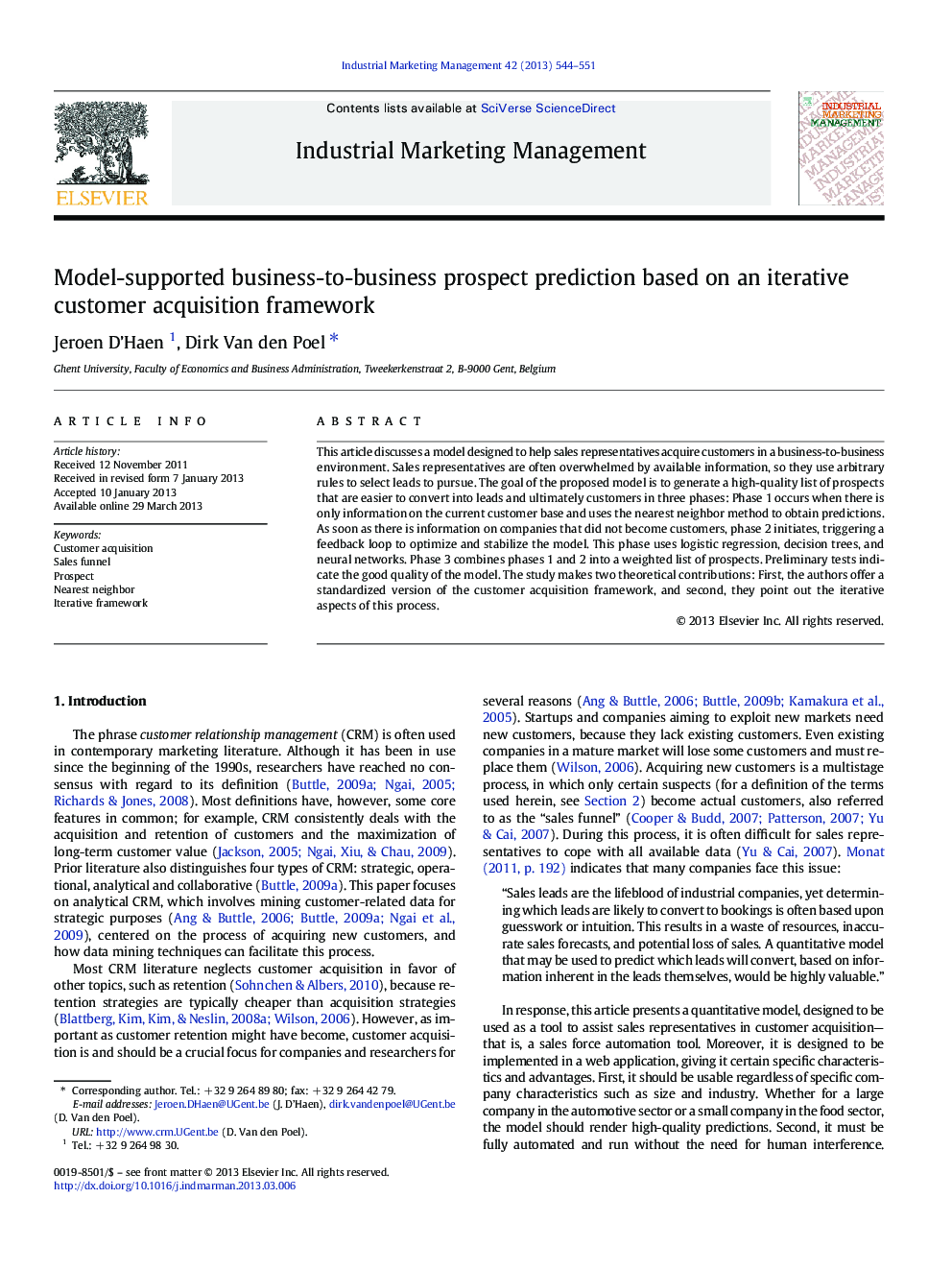| کد مقاله | کد نشریه | سال انتشار | مقاله انگلیسی | نسخه تمام متن |
|---|---|---|---|---|
| 1027509 | 942243 | 2013 | 8 صفحه PDF | دانلود رایگان |

• A prospect prediction model is developed based on an iterative customer acquisition framework.
• It is designed to be able to run without human interaction and can be implemented in a web application.
• The model is iteratively enhanced using feedback data.
• Results show a conversion from prospect to lead that is higher than average.
This article discusses a model designed to help sales representatives acquire customers in a business-to-business environment. Sales representatives are often overwhelmed by available information, so they use arbitrary rules to select leads to pursue. The goal of the proposed model is to generate a high-quality list of prospects that are easier to convert into leads and ultimately customers in three phases: Phase 1 occurs when there is only information on the current customer base and uses the nearest neighbor method to obtain predictions. As soon as there is information on companies that did not become customers, phase 2 initiates, triggering a feedback loop to optimize and stabilize the model. This phase uses logistic regression, decision trees, and neural networks. Phase 3 combines phases 1 and 2 into a weighted list of prospects. Preliminary tests indicate the good quality of the model. The study makes two theoretical contributions: First, the authors offer a standardized version of the customer acquisition framework, and second, they point out the iterative aspects of this process.
Journal: Industrial Marketing Management - Volume 42, Issue 4, May 2013, Pages 544–551